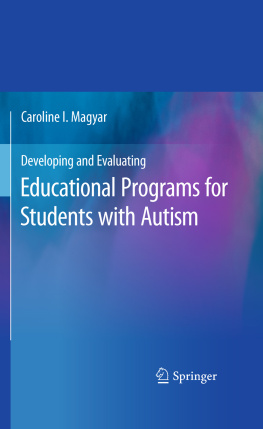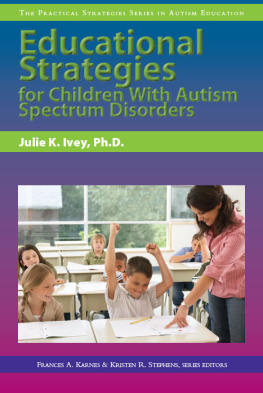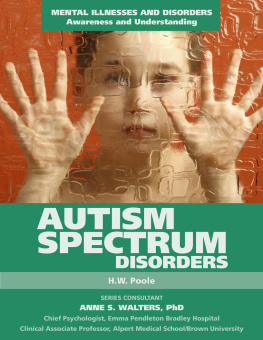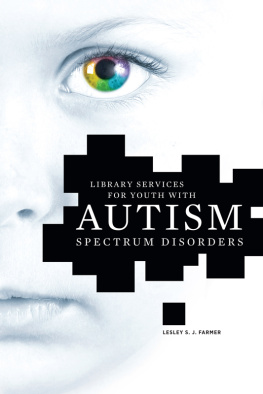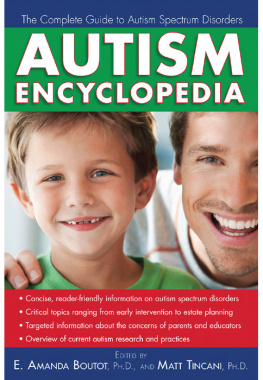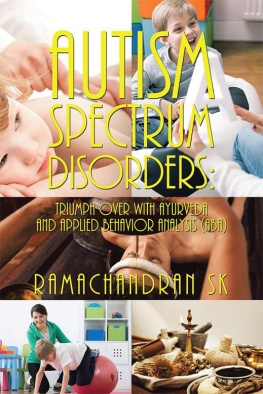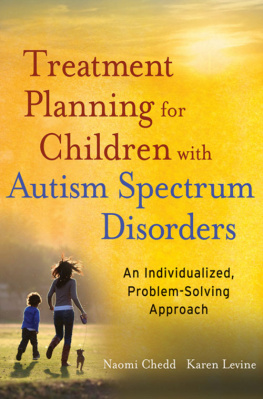Part 1
Overview of Autism Spectrum Disorders, Intervention Research, and Considerations in Developing an ASD Program
Caroline I. Magyar Developing and Evaluating Educational Programs for Students with Autism 10.1007/978-1-4419-6303-1_1 Springer Science+Business Media, LLC 2011
1. Autism Spectrum Disorders in Children and Youth
Caroline I. Magyar 1
(1)
Department of Pediatrics School of Medicine and Dentistry, University of Rochester, 601 Elmwood Ave, 671, Rochester, NY 14642, USA
Chapter Learning Objectives
Increase knowledge of the characteristics of autism spectrum disorders
Increase understanding of the impact characteristics have on student learning
Increase knowledge of issues and considerations in establishing appropriate educational programs for students with ASD
Students with autism spectrum disorders (ASD) present unique educational programming challenges to schools because of their complex neurodevelopmental, social and behavioral difficulties. The very notion of a spectrum is truly conveyed by this group of developmental disorders as it is characterized by wide variability in symptoms and a high prevalence of co-occurring cognitive, learning, and behavioral disorders, that can change over time with development. This chapter seeks to describe the core and related features of ASD and to present this information in a way that assists school personnel in conceptualizing the types of educational and behavioral supports that students with ASD require to maximize participation in the learning process and to improve outcomes. To accomplish these learning objectives, the chapter begins with an overview of autism spectrum disorders that includes a brief description of the various disorders that comprise the autism spectrum, current theories about causes of autism, and recent data from national studies on the prevalence of ASD within our community. Next, the chapter presents information on the clinical symptoms of the ASDs and the various associated features and conditions. The chapter ends with a discussion of the implications and considerations for establishing appropriate educational programs for students with ASD.
The Autism Spectrum
Autistic Disorder (AD) is one of the most researched of all childhood developmental disorders. It is one of five Pervasive Developmental Disorders (PDD) described in the Diagnostic and Statistical Manual-Fourth Edition-Text Revision (DSM-IV-TR; APA, ). Separate disorders are listed when information provided is disorder specific.
ASDs are estimated to affect about 1 in 110 (CDC, ).
What Causes Autism?
While the specific cause of autism is unknown, its neurobiological nature is well-established (Gillberg & Coleman, shows a visual representation of the downstream effects of the hypothesized genetic abnormalities on brain development and functioning and the resultant behavioral symptoms comprising the autism spectrum and related features.
Fig. 1.1
Conceptual Model for Understanding Autism Spectrum Disorders Adapted from Minshew, Johnson, and Luna ()
Characteristics of ASD
Autism spectrum disorders are a group of complex neurodevelopmental disorders that share a core set of clinical symptoms, in addition to a range of related and associated features and conditions. This results in the wide variability in symptom profile within and across affected individuals with ASD. Yet, despite the chronic nature of ASD, the functioning of any one student is not necessarily static (Volkmar, Paul, Klin, & Cohen, ). Rather, students with ASD grow and develop like other youth, although the rate and patterns of development may differ across students. Some developmental aspects may remain stable, such as intelligence, but changes often occur in social communication and adaptive behavior over time. For example, a young child with AD and significant language delays may show improved communication skills during his early childhood years. A high school student with AsD may show dramatic improvements in his socialization and self-sufficiency skills during his later adolescent and young adult years. Other students, however, may show little progress, despite intensive intervention. Therefore, developing a more complete understanding of the core and related symptoms of ASD and the behavioral changes that can occur throughout a students development, school personnel can be in a better position to identify appropriate educational and behavioral programs and services.
Core Features
There are three core diagnostic symptom categories for the ASDs. These include impairments in reciprocal social interaction, communication and language, and the presence of restrictive, repetitive and stereotyped patterns of behavior, interests and activities. Symptom categories and other clinical criteria such as age of onset apply to each of the ASDs in different ways to distinguish an individual among the three disorders. Table provides a description of each of the core features and the variables that distinguish AD, AsD, and PDD-NOS.
Table 1.1
Core and related features of autism spectrum disorders
Core features |
|---|
Qualitative impairments or the presence of specific behaviors are seen in |
|---|
Social interction | Communication | Restricted repertoire of behavior and interests |
|---|
Nonverbal behavior (e.g., gaze, gestures) Peer relationships Sharing (e.g., interests, excitement) Social/emotional reciprocity | Speech (e.g., delay or lack of development) Conversation Presence of stereotyped/repetitive speech patterns Social imitative play | Presence of circumscribed interests Presence of rituals/routines Presence of motor mannerisms Preoccupation with parts of objects |
Core features vary within and between students with ASD |
Autistic Disorder (AD) : impairments noted in all three areas with delays or abnormal functioning in social interaction, social communication, or imaginative plan prior to age 3 years |
Aspergers Disorder (AsD) : impairments noted in social interaction and restricted behavior, but no clinically significant delay in communication, cognitive development, or in the development of age-appropriate adaptive skills |
Pervasive Developmental Disorder-NOS (PDD-NOS) : this category is used when the child demonstrates severe and pervasive impairment in the development of reciprocal social interaction with or without the presence of repetitive behavior patterns and does not meet age criteria, or presents with atypical symptom profile, or subthreshold symptomatology, or all of these |
Students with ASD may also present with other clinical symptoms or disorders including |
Related features |
Mental health and behavior | Medical/other | Cognitive and neurocognitive |
Anxiety Depression Attention deficit hyperactivity Tic disorder Aggression Self-injury |

